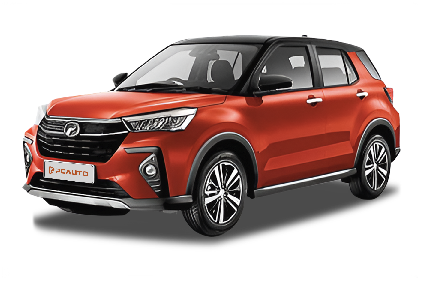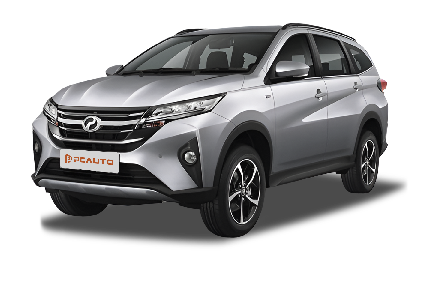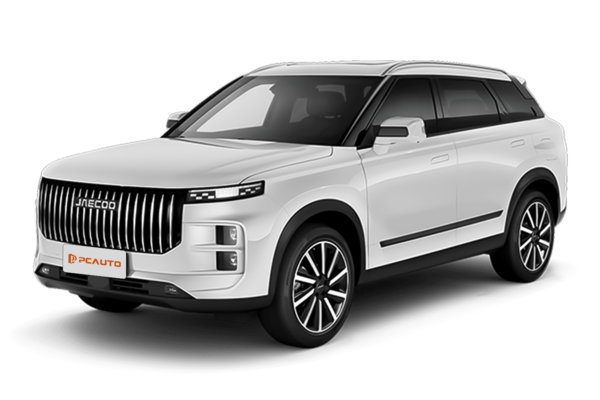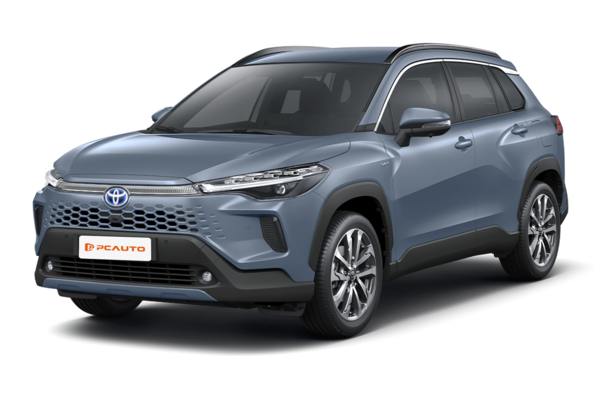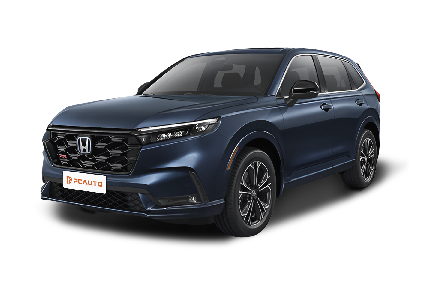Q
Is Honda City worth buying?
As Honda Fit has a range of appealing features, it is definitely worth considering. In terms of safety, it is equipped with standard safety configurations such as Anti-lock Braking System (ABS), Vehicle Stability Assist, and multiple airbags to ensure driving safety. For instance, many models are equipped with six airbags, which can provide better protection for all passengers in the event of a collision.
In terms of fuel economy, the official combined fuel consumption of the gasoline - powered models is about 5.6 liters per 100 kilometers, while that of the hybrid version is 3.6 liters per 100 kilometers. This helps to save on fuel costs and makes it suitable for daily commuting and long - distance trips.
The seats inside the car are comfortable. Both the driver's and passengers' seats can be manually adjusted. The 60:40 split - folding rear seats allow for flexible adjustment of the cargo and passenger space. The infotainment system with an 8 - inch touchscreen and Sound Plus function provides entertainment and connectivity options. It also features advanced driver - assist systems like Lane Departure Warning and Forward Collision Warning, further enhancing safety.
Regarding the price, the starting price of the model is RM 84,900. Considering its configuration and build quality, it offers great value for money. Overall, the Honda Fit is a practical and reliable choice for those seeking an affordable and well - equipped vehicle.
Q
What are the differences between Hyundai i10 and Swift?
The Hyundai i10 and the Suzuki Swift are both popular small cars in the Malaysian market, but there are obvious differences in their design and positioning. The i10 is mainly targeted at urban commuting. It has a compact body (3,670mm in length), which is suitable for narrow roads. It is equipped with a 1.2L naturally aspirated engine (83PS/118Nm) and paired with a 4AT gearbox. It focuses on fuel economy (the official fuel consumption is about 5.1L/100km). The interior is mainly for practicality, and a 7-inch touchscreen comes as standard.
On the other hand, the Swift leans towards a sporty style. It has a slightly longer body (3,840mm). It uses a 1.4L Boosterjet turbo engine (90PS/130Nm) or a 1.2L mild-hybrid system, and is paired with a 6AT or CVT gearbox. It offers more flexible handling, and its fuel consumption is similar (about 4.8L/100km). It comes standard with LED headlights and sports seats. In terms of space, the rear row of the Swift is more spacious, while the i10 has a smaller turning radius. In terms of safety features, the Swift usually comes with more ADAS functions such as lane-keeping assist.
More specifically, choosing the i10 is more suitable for urban users with a limited budget who value cost-effectiveness, while the Swift is suitable for young consumers who pursue driving pleasure. In the hot climate of Malaysia, the air-conditioning efficiency of both cars has been locally adjusted, but the turbo engine of the Swift may experience less power loss in high-altitude areas like Genting Highlands. Both cars meet the engine displacement standard of below 1.5L for road tax incentives, and their maintenance costs are also relatively close.
Q
how to use nissan serena roof monitor
To use the roof-mounted monitor in the Nissan Serena, start by turning on the vehicle's power. Locate the control button for the monitor, typically found on the center console or near the front seats. Press the power button to activate the monitor, and through the menu options, you can select various display contents such as videos or navigation. You can also adjust settings like screen brightness, contrast, and volume according to your preferences. It is important to note that during driving, to ensure safety, the driver should not operate the roof monitor.
Q
What is the Monthly Installment of Perodua Axia? See Here!
The monthly installment amount for the Perodua Axia depends on factors such as the model chosen, the loan term, the down - payment percentage, and the bank interest rate. Take the latest 2023 Axia 1.0L as an example. If you select the Standard version with a car price of approximately RM38,600, and take a 90% loan to be repaid over 7 years, calculated at the current mainstream bank interest rate of 3.5%, the monthly payment will be around RM500. For the high - spec AV version with a car price of about RM49,500, under the same conditions, the monthly installment will be approximately RM650.
It's worth noting that different promotional seasons or exclusive bank offers may provide a lower interest rate or a longer repayment period. It is recommended to directly get an accurate quote through Perodua's official website loan calculator or authorized dealers. Besides, when buying a car, you also need to consider additional costs such as insurance, road tax, and handling fees, which can usually be included in the total loan amount.
For consumers with a limited budget, it is advisable to compare loan schemes of different financial institutions and at the same time pay attention to the car subsidy policies introduced by the government. For instance, the tax exemption for Energy - Efficient Vehicles (EEV) may further reduce the car - buying cost. Understanding these details can help you plan your finances more wisely and ensure that you choose the most suitable car - buying scheme for your financial situation.
Q
How to open the hood of Toyota Corolla Cross?
To open the bonnet of a Toyota Corolla Cross, first locate the engine hood release handle, which is located near the driver's side foot area in the cockpit, and pull it. Then walk to the front of the vehicle, in the middle of the front end of the hood, you will touch a lock that can be toggled, push it to the right to lift the hood. It should be noted that the operation should be gentle to avoid damaging parts.
Q
What's the price of BMW i4 ?
The price of the BMW i4 in Malaysia varies depending on the configuration and model version. The price of a common configuration is approximately between RM273,800 and RM430,800. However, the specific price needs to be referred to the latest quotation of the local dealer.
Q
Are challengers fuel efficient?
As a classic American muscle car, fuel economy isn't the main selling point of the Dodge Challenger. Especially in the V6 or V8 engine versions commonly seen in the Malaysian market, the urban fuel consumption is about 12-15 liters per 100 kilometers, and it can drop to 9-11 liters per 100 kilometers during highway cruising. This is slightly higher compared to Japanese or European performance cars in the same class, but it aligns with its emphasis on large-displacement power output and retro design concept.
If you're considering fuel efficiency, you can focus on the SXT version equipped with a 3.6L Pentastar V6 engine, or choose options like the rear-axle differential and active exhaust to improve highway cruising efficiency. Malaysian consumers should note that this type of American car is more suitable for long-distance driving or for collectors. If you commute frequently and care about fuel consumption, you can also compare local popular hybrid models such as the Toyota Camry Hybrid or the Honda City RS, which can optimize fuel performance while maintaining power.
When making an actual choice, it's advisable to consider your own driving habits and fuel budget, and take a test drive to experience the unique driving feel and the charming engine roar of an American muscle car.
Q
What is the Toyota equivalent of a Subaru Crosstrek?
In the Malaysian market, the Toyota model with a similar positioning to the Subaru Crosstrek is the Toyota Corolla Cross. Both belong to the compact crossover SUV category, suitable for urban driving and light off - road needs. The Corolla Cross is available in fuel - powered and hybrid versions, equipped with a 2.0L naturally aspirated engine or a 1.8L hybrid system, which takes fuel economy into account. On the other hand, the Crosstrek features Subaru's signature Symmetrical AWD full - time four - wheel drive and horizontally opposed engine, making it a better choice for users who pursue handling stability. When it comes to space performance, the Corolla Cross has a slight advantage in rear - seat and trunk volume, making it more suitable for family use. Meanwhile, the Crosstrek has a higher ground clearance (about 220mm), offering better passability. The price ranges of the two cars in Malaysia are similar, but Toyota has a more extensive after - sales network, providing greater convenience for maintenance. Subaru, however, attracts niche enthusiasts with its imported status and unique technologies. It's worth noting that in Malaysia's rainy climate, the four - wheel drive system can enhance safety on slippery roads, but it also increases fuel consumption. Consumers can make a choice based on their daily driving conditions.
Q
What is the top speed of the Audi RS6?
As a high-performance station wagon, the officially announced top speed of the Audi RS6 is 280 km/h. If you opt for the Dynamic Plus package, it can be increased to 305 km/h. This is thanks to its 4.0-liter V8 twin-turbocharged engine, which can output 600 horsepower and 800 Nm of torque. Paired with an 8-speed Tiptronic transmission and the quattro all-wheel-drive system, this car can still demonstrate excellent stability and acceleration performance under the tropical climate and changeable road conditions in Malaysia. For Malaysian car enthusiasts, the RS6 not only offers the practical space of a station wagon but also has the performance of a supercar, making it very suitable for players who pursue both speed and practicality. It's worth mentioning that although the RS6 has a very high top speed, traffic rules still need to be followed on Malaysian roads. After all, safe driving is the most important thing. In addition, the chassis tuning and aerodynamic design of the RS6 have also been specially optimized, allowing it to maintain excellent handling even at high speeds, enabling drivers to experience Audi's profound technical accumulation in the field of performance cars.
Q
Does Hyundai Sonata have an ample interior space?
Yes, Hyundai Sonata offers a relatively spacious interior. In terms of body dimensions, certain variants measure nearly 5 meters in length and over 1.8 meters in width, with a longer wheelbase that provides the foundation for ample cabin space. For passenger accommodation, drivers of various statures can easily find a comfortable seating position in the front, while rear-seat occupants enjoy ample legroom – with knee clearance reaching approximately 1 meter in some configurations and headroom maintaining about one fist's width – ensuring relaxing posture even during extended journeys.
The model also performs well in cargo capacity, adopting a trunk with approximately 500L standard volume and 4/6 split-folding rear seats that extend maximum loading depth to nearly 2 meters, easily accommodating golf bags or folded bicycles. Practical storage solutions abound throughout the cabin, including dedicated compartments on all four doors and an open tray beneath the center console perfectly for the storage of phones and wallets. This thoughtful spatial design comprehensively meets demands for both daily commutes and long-distance travel.













